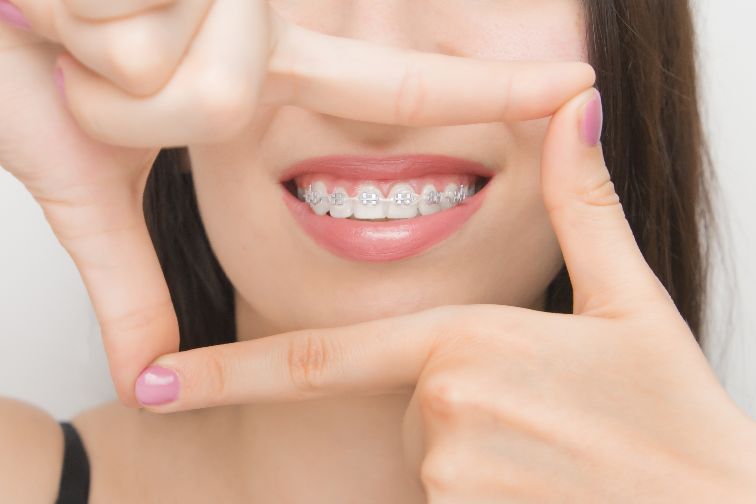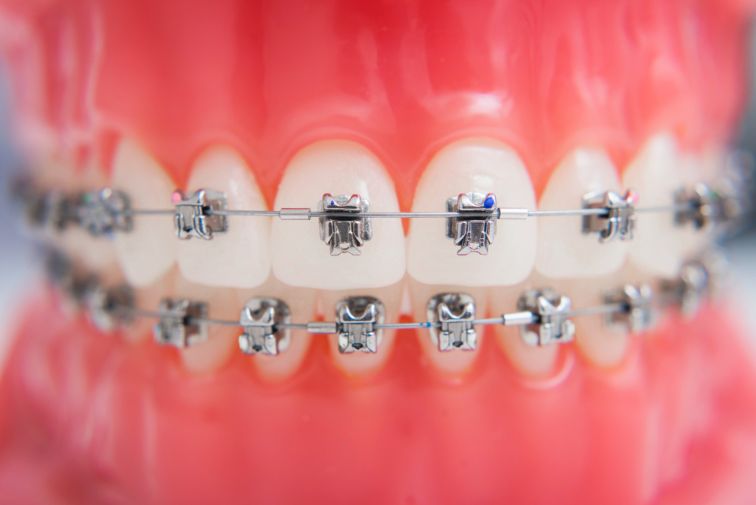A person who has had any teeth-related issues in life or knows someone who has, has probably heard a lot about dental braces. A lot of people, especially kids, have problems with crooked teeth and the best way to treat this issue is to get braces. One of the braces that is getting a lot of attention today are the self-ligating braces. What exactly are those braces and how can they help a patient?
When a patient has braces, the brackets are attached to their teeth. A dentist then runs a thin metal wire called an archwire through those brackets. The purpose of this archwire is to apply force and move the patient’s teeth into the desired position.
The braces only work when the archwire remains secured in the brackets.
When setting the traditional braces, dentists do this by using elastic bands or metal ties. However, when it comes to self-ligating braces, they use a system built into the bracket itself to hold the archwire.

Unfortunately, there’s no definitive answer to this question. There are many types of self ligating braces and whether a patient needs them or not depends on various factors like their specific condition, treatment plan, and budget.
Personal preferences and the dentist’s opinion are the two main factors that determine whether or not a patient should wear self-ligating braces.
As stated before, there are various types of those braces. Here’s what they are and how they can help a patient.
This type uses a thicker archwire and delivers more pressure onto teeth. This helps them to move the teeth more efficiently. This is the current consensus among dentists, but there is still a lot of research to be done. Therefore, the best thing a patient can do is to consult their personal dentist regarding this type of braces.
Unlike the previous type, these braces use a smaller size archwire while maximizing space between each bracket. This design considerably reduces friction, but allows the appliance a wider range of motion. This is the preferred option for most dentists, especially at the beginning of the treatment.
This less intrusive method reduces friction drastically and this makes it a more comfortable option. To be frank, this method is not as effective as the active one and this is exactly why it’s mostly used in milder cases.
One of the main differences between these two types is this:
The main feature of self-ligating braces is the fact that they use a built-in system to secure the archwire to the brackets. This is why this type of braces is also called self-ligating brackets.
The traditional braces, on the other hand, use tiny elastic bands or metal ties that are applied to the brackets to hold the archwire in place. These are called ligatures.

When it comes to those two types of braces, the main concern is the appearance. Metal self ligating braces are good for those patients who want to give their teeth straightening a bit more flare by showing off their braces or decorating them.
Those braces are great for adults and kids who are not shy to show their teeth.
When it comes to self ligating ceramic braces, there’s a chance that a patient might stain them. A lot of patients say that their ceramic braces turn yellow over time.
However, this is the case with the old clear twin brackets. The new ceramic self ligating braces, the chances of staining the o-ties are reduced. This is because the clear self ligating braces use a clip to hold the wire in. This means there’s no problem with teeth staining or discoloration.
One of the main advantages of self-ligating braces is the fact that they are pretty easy to clean. The ligatures in traditional braces trap food particles in and around the brackets. This makes cleaning complicated. However, the absence of ligatures in self-ligating braces makes them easier to clean.
Some manufacturers make self-ligating braces that are smaller than the traditional braces. This makes them a bit more comfortable. However, whether or not braces will be comfortable depends on the craftsmanship.
In the case of traditional braces, individual ligatures must be replaced during an adjustment. This takes time and patients might get uncomfortable during the treatment. The opening and shutting of self-ligating brackets during the adjustment takes a lot less time.
One of the rare disadvantages of self-ligating braces is the cost. They are a bit more pricey than traditional braces and they cost between $3,500 and $8,500. This can be a lot for a lot of people, but it’s safe to say that this is an investment worth making.
Much like with conventional braces, there is an adjustment period a patient must go through once the dentist installs the self-ligating braces. During these appointments, the dentist keeps track of the progress, replaces the archwire, and tightens the braces. Those visits can be a bit unpleasant, but they are a necessary part of the treatment.

